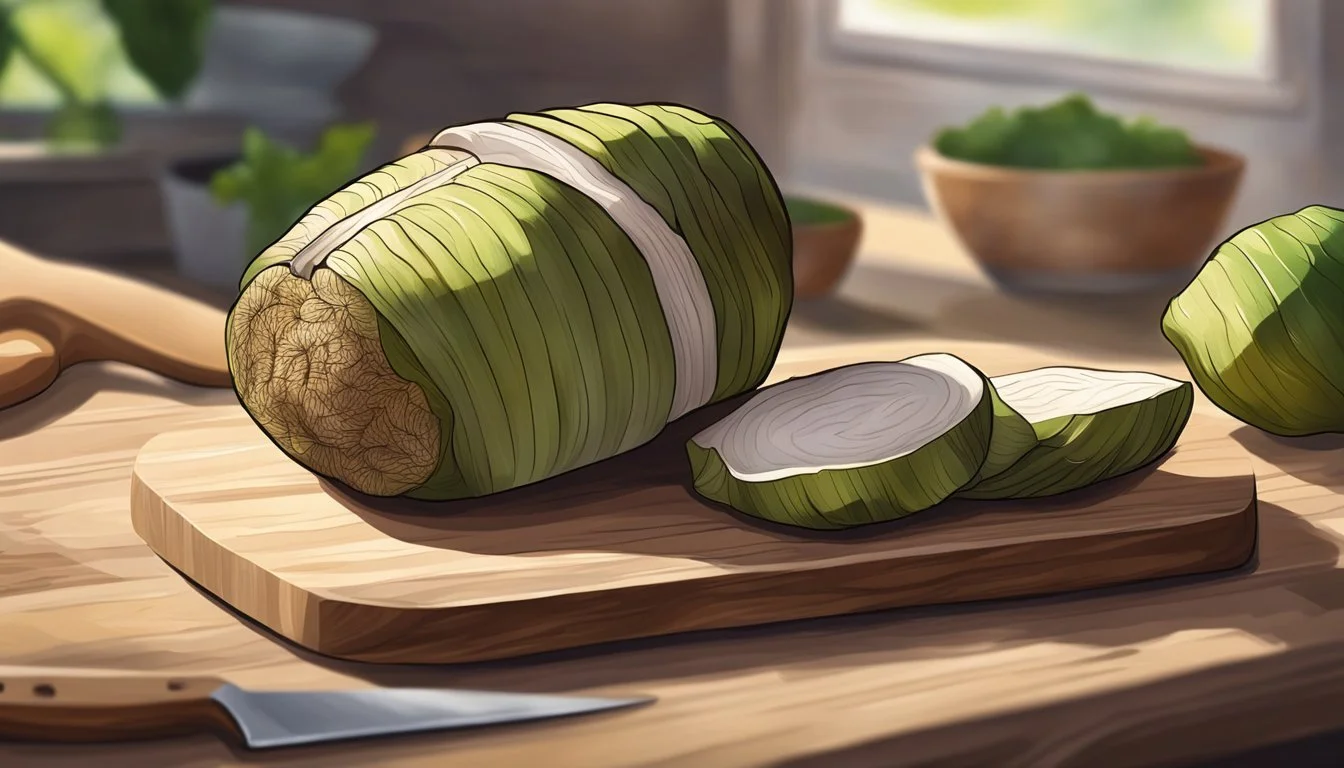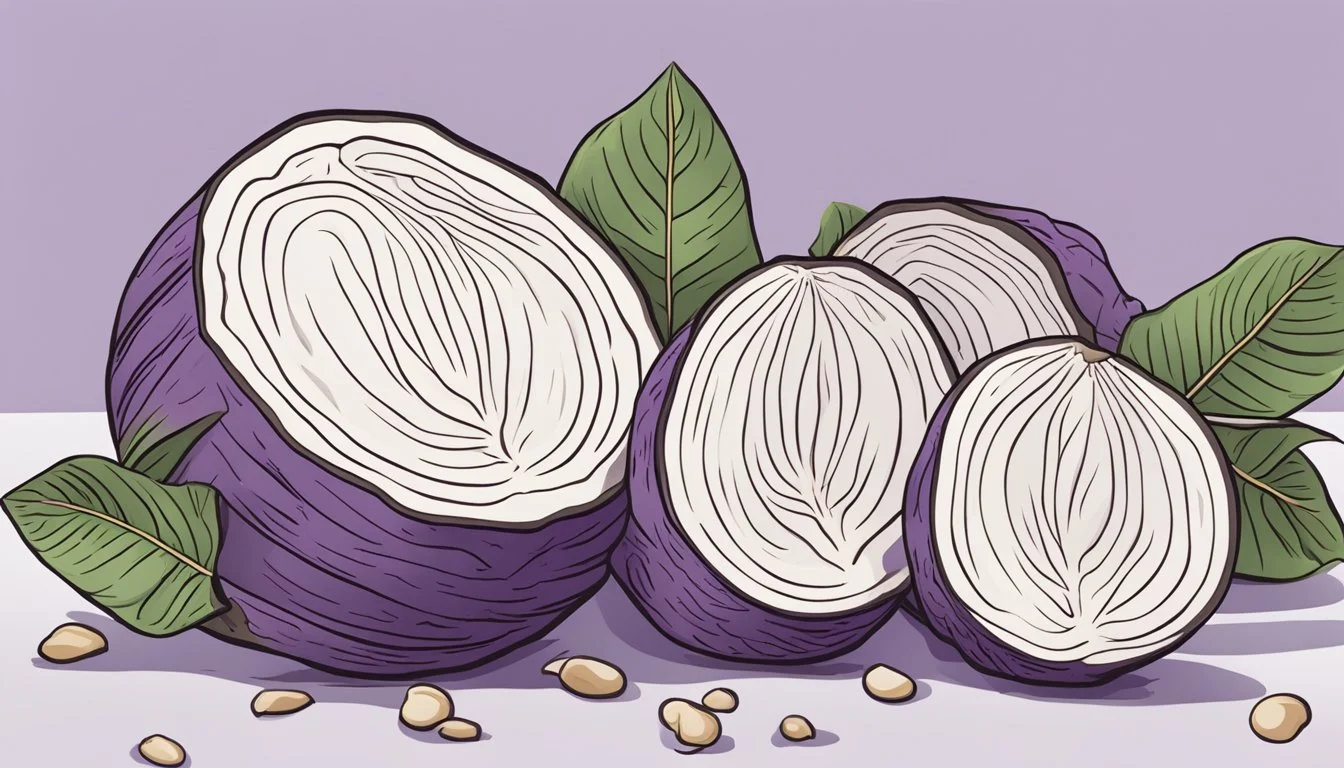How do you eat a taro root?
Preparing and Enjoying this Versatile Vegetable
Taro root is a staple tuber crop and a cultural cornerstone in various parts of Asia and the Pacific Islands, where it has been cultivated for thousands of years. This starchy root vegetable is valued not only for its versatility in cooking but also for its nutritious offerings. Rich in fiber, vitamins, and minerals, taro is considered a beneficial addition to a balanced diet. When cooked, its texture can be similar to potatoes, yet it offers a uniquely nutty flavor that sets it apart from other root vegetables.
Consuming taro root can be an exciting culinary adventure due to its numerous preparation methods. From being boiled and mashed into a creamy consistency in the traditional Hawaiian dish Poi, to being roasted until golden brown to accentuate its earthy taste, the taro root is well-suited to a variety of dishes. While larger taro roots tend to yield a stronger flavor suitable for intricate recipes, the smaller roots are perfect for adding moisture and a subtle taste to a dish.
In preparing taro root, it is essential to handle it properly as the raw vegetable can cause skin irritation due to the presence of calcium oxalate. It is therefore paramount to cook taro thoroughly before consumption to deactivate the irritants and enjoy the root's dietary benefits safely. Whether incorporated into soups, stews, stir-fries, or used as a substitute for other tubers like potatoes and sweet potatoes, taro root offers a hearty addition to any meal.
Understanding Taro
Taro root, often referred to as dasheen, is a starchy root vegetable known for its rich nutrient profile and versatility in cooking. It is integral to the cuisine of many cultures across the globe.
The Origin of Taro Root
Taro (Colocasia esculenta) is indigenous to Southeast Asia and Southern India. It is a perennial plant cultivated in tropical and subtropical regions around the world including Africa, Asia, the Caribbean, and the Pacific Islands. Known for its corm, or root, it's utilized in a variety of culinary dishes and appreciated for its ability to thrive in diverse environments.
Nutrition Profile
Taro root stands out for its nutritional content, offering a powerful punch of dietary fiber, vitamins, and minerals. In a 100-gram serving of cooked taro, one can find:
Calories: 142 kcal
Carbohydrates: 34.6 g
Dietary Fiber: 5.1 g
Fat: 0.11 g
Protein: 0.52 g
Additionally, taro provides essential nutrients such as potassium, vitamin C, vitamin B6, magnesium, and iron. However, it also contains calcium oxalate, which can be reduced through proper preparation and cooking methods.
Comparing Taro with Other Roots
When compared to other root vegetables like potatoes, sweet potatoes, and yams, taro root is denser in starch and nutrients. Its taste and texture can vary, with a subtle sweetness and a nutty flavor profile that complements many dishes. Here are some points of comparison:
Nutrient Taro (per 100g cooked) Potato (per 100g cooked) Sweet Potato (per 100g cooked) Calories 142 87 90 Carbohydrates 34.6 g 20.1 g 20.7 g Dietary Fiber 5.1 g 2.2 g 3.3 g Potassium 484 mg 421 mg 475 mg Vitamin C 4.5 mg 9.6 mg 19.6 mg
Taro's intricacy as a root vegetable is foundational to its role in various cultural cuisines and its importance in a balanced diet, showcasing its merits as a substantial component of a diverse array of dishes.
Preparation Basics
Before one indulges in the rich, starchy texture of taro root, it is crucial to understand the essentials of taro preparation. This covers selecting the best corms, proper storage techniques, and the safe approach to peeling.
Selecting Quality Taro
When selecting taro, one should look for corms that are firm to the touch without any major blemishes or soft spots. The skin should be intact, with a fibrous texture, indicating a fresh vegetable. A quality taro root will also be heavy for its size, suggesting a good moisture content within.
Storing Taro Properly
To store taro correctly and maintain its freshness, one must keep it in a cool, dark place where it can stay dry. It's advised to place taro in a well-ventilated area, preferably in a basket or a mesh bag that allows air to circulate and prevents the accumulation of moisture, which could lead to spoilage.
Peeling Taro Safely
Peeling taro requires attention due to the irritant nature of its skin. It is recommended to use gloves while handling and peeling taro to protect the skin from irritation. One should use a sharp knife or a vegetable peeler to remove the thick skin, revealing the starchy flesh underneath. Always peel taro under running water to minimize contact with the sap and reduce the risk of skin irritation.
Culinary Techniques
When preparing taro root, the cooking method greatly influences its texture and flavor. Techniques like boiling, roasting, and frying unlock the root's versatility, allowing it to be incorporated into various dishes.
Boiling Taro
Boiling is a foundational method to cook taro. One begins by peeling the taro root and then slicing it into even pieces. To boil taro, simply place the pieces in a pot of water with a pinch of salt and bring to a boil over medium-high heat. The taro should be cooked for about 15 minutes or until fork-tender. This method is especially useful for further preparations, like mashing or incorporating into stews.
Roasting Methods
Roasting enhances taro's natural sweetness and adds a delightful crispy edge. Preheat the oven to 400°F (200°C) and line a baking sheet with parchment paper for baked taro goodness. Toss the peeled and cubed taro with vegetable oil, minced garlic, salt, and pepper. Spread the taro evenly on the baking sheet and roast until they turn a golden brown, usually taking about 45 minutes. This method is perfect for creating a slightly crunchy exterior with a fluffy inside.
Creative Frying
Frying taro can take the form of taro fries or taro chips, providing a unique alternative to traditional potato-based snacks. For taro fries, heat a mix of olive oil and sesame oil in a skillet over medium-high heat. Cut the taro into sticks and fry until golden and crispy, around 5 minutes, seasoning with salt afterward. Alternatively, to make taro chips, thinly slice the root, and fry in vegetable oil until crispy then sprinkle with salt. These methods produce a fibrous snack with an appealing crunch.
Specialty Taro Dishes
Taro root, a staple in various cuisines around the world, is not just versatile in its culinary applications but also cherished in specialty dishes across different cultures. Each preparation highlights the unique sweet flavor and the gluten-free quality of taro, making it a sought-after ingredient in both savory and sweet creations.
Pacific Island Poi
In the Pacific Islands, taro root is the star ingredient in the traditional dish known as poi. This dish is a thick, sticky paste made by steaming or boiling taro roots and then mashing them until they reach a smooth, dough-like consistency. The mashing process may include the gradual addition of water to achieve the desired texture. Poi is a quintessential part of Hawaiian cuisine and is celebrated for its simplicity and cultural significance.
Incorporating Taro in Sweets
Taro root also lends itself well to sweet applications. Taro ice cream is a delicacy in many Asian districts, offering a subtle, nutty flavor with a distinctive purple hue. Additionally, taro can be found in a variety of baked goods and desserts, sometimes taking the form of soft, chewy pastries or as the flavorful base in bubble tea—a popular beverage that has garnered international appeal.
Taro Ice Cream: A creamy delicacy with a unique purple color.
Baked Goods: Gluten-free pastries with taro's sweet and nutty taste.
Cultural Cuisines
Around the world, taro is known by various names, including eddo in parts of Africa and the Caribbean. It is fundamental in creating an assortment of dishes that reflect the diverse cuisines of these regions. For instance, in West Africa, taro leaves, not just the root, are commonly used in stews and soups. Similarly, taro plays a significant role in the culinary traditions of Latin America and the Caribbean, where it is enjoyed in savory applications, often cooked until its starchy body turns soft and flavorful.
African Cuisine: Taro leaves used in stews and soups.
Latin American & Caribbean: Taro cooked until tender in savory dishes.
Health Considerations
When consuming taro root, individuals must navigate its nutritional benefits while also being mindful of potential toxicity risks. The root offers substantial dietary fibers and nutrients beneficial for heart health but requires proper preparation to mitigate toxicity.
Managing Toxicity Risks
Taro root contains calcium oxalate, which can be toxic when consumed raw. To ensure safety, one must always cook taro thoroughly before consumption to degrade the calcium oxalate. This substance can cause irritation and a burning sensation in the mouth and throat if ingested raw. Therefore, it is imperative to peel the taro root and cook it to neutralize the potential hazards. Consuming taro in this way allows one to benefit from its rich nutritional content without adverse effects.
Taro and Dietary Needs
Taro root is a nutritious staple that fits well within a variety of dietary needs. It is gluten-free, making it a suitable carbohydrate source for those with celiac disease or gluten intolerance. Taro is high in dietary fiber, which aids in digestion and may contribute to heart health by helping to maintain normal cholesterol levels. In terms of nutrition, taro is rich in several essential vitamins and minerals, including vitamin C, potassium, and calcium. Despite its health benefits, one should consume taro in moderation due to its sugar content. Individuals can enjoy the benefits of taro root as part of a balanced diet.
Enhancing Flavors and Textures
When cooking taro root, understanding how to enhance its natural flavors and optimize its unique texture is essential. Adding the right seasonings and preparation techniques can turn this starchy root into a culinary delight.
Understanding Taro's Texture
Taro's texture can vary from creamy to slightly dry, depending on preparation. Rich in fiber and starch, it is this starchy composition that contributes to taro's ability to become smooth and velvety when cooked properly. For a perfectly soft texture, boiling is often recommended, especially when one intends to mash the taro root for a dish that requires a smooth consistency much like mashed potatoes. The key is to cook it until it is easy to pierce with a fork, which generally indicates that it has reached the ideal texture for mashing.
Seasoning and Spices
The sweet and nutty flavor of taro pairs well with a variety of seasonings and spices. To highlight its inherent taste, a simple seasoning with salt and pepper can suffice. However, taro also absorbs flavors well, allowing for more adventurous spice combinations. Consider the following to enrich taro's flavor profile:
Salt: A fundamental seasoning that enhances taro's natural taste.
Pepper: Adds a subtle heat that complements the nutty notes in taro.
Garlic: With its pungent aroma, minced garlic can be mixed with taro to deepen the flavor.
Sesame Oil: A few drops can introduce a rich, toasty essence to the taro.
For a distinctive twist, one might incorporate aromatic spices such as cumin or coriander to contrast the sweetness of the taro. It is also receptive to sweet spices like cinnamon, which can amplify the starchy root's natural sweetness. Whether one seeks to maintain the integrity of taro's taste or elevate it with spices, balance is key to ensuring each flavor complements the other without overpowering the taro's delicate nuttiness.





